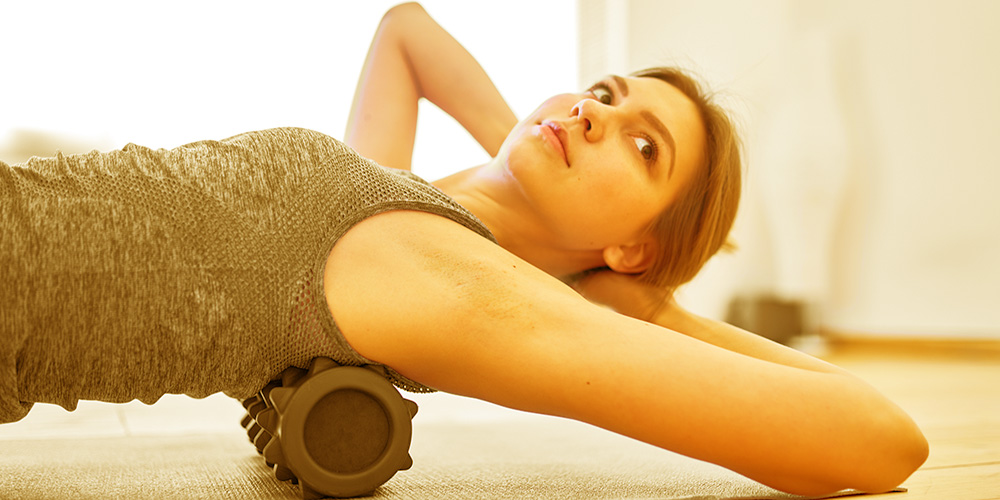There has never been an athlete who started too recovered – but runners that have not recovered enough are (unfortunately) the norm. Often, a specifically planned recovery is missed out in the training program.
Most runners underestimate their need for recovery: at least one day between two intense training sessions is useful for regeneration. Even ambitious athletes should allow themselves one day of rest per week and plan a week of rest every three to four weeks.
Even more recovery is needed after a competition. For every two kilometres of competition, one day of regeneration is expected. As a rule of thumb: after a half-marathon ten days of recovery time, after a marathon about two to three weeks. Why so much?
Important for maximizing performance
The reason is that intense sporting activity causes (reversible) damage to the tissue and triggers inflammatory processes in the body. In the recovery phase, the tissue can regenerate and the inflammatory processes come to a halt.
Subsequently, a so-called “supercompensation” begins. It prepares the body for a new strain. In this phase, glycogen stores are filled to the maximum and muscles as well as ligaments, tendons and bones are strengthened so that they can withstand renewed stress as well as possible. During the recovery period, exactly what is needed to get the maximum performance out of yourself over the next few days happens.
How to proceed
Immediately after training or competition, you can use stretching or foam rolls to loosen the muscles and thus promote the breakdown of lactic acid and other metabolic products.
Many people find a dip in a cool lake (for “hardcore” people, an ice bath) and/or a massage beneficial after exertion. Some competitive athletes even spend a few minutes in a cold chamber at around -110 degrees Celsius, because “cooling” in dry cold slows down inflammatory processes in the tissue. After a cold therapy you should take a hot shower and dress warmly!
Within the first two hours of an intense training session, preferably within the first 30 minutes after, the runner should consume carbohydrates, either in the form of a sports drink or other easily digestible products, in order to replenish the emptied glycogen stores as quickly as possible. A sufficient fluid intake during and after training is also important.
Mental recovery factors
Afterwards, a balanced, healthy diet with sufficient calories and for the supply of micronutrients is recommended. It should be rich in carbohydrates (during strength training also rich in proteins, for example with whey protein) to fill the energy stores and accelerate the repair processes. Additional supplementation with dietary supplements is only necessary in cases of proven deficiency.
The processes in the supercompensation phase are supported by the autonomous nervous system. In order for it to be able to perform its task, the athlete should avoid stress as much as possible and provide many relaxing moments. These include, for example, sufficient sleep and leisure time.
Mental relaxation also consists of “letting your mind wander”, meeting friends or spending time with family and distraction.
The consequences of poor recovery
If you neglect your regeneration, you put your performance at risk. The consequences are overuse injuries, inflammation, stress fractures, premature joint arthrosis and an “overtraining syndrome” (overreaching) that can last for months. The symptoms include poorer sleep, loss of appetite, increased resting pulse and listlessness. If such signs occur, it is high time to plan not only training but also recovery. Because regeneration is just as important as training!
Alternation with alternative sports
To avoid misunderstandings: Recovery does not mean that the runner is completely banished to the couch. Depending on the circumstances, casual training during recovery time can be quite useful, ideally in other sports. Well suited for endurance training are activities that avoid “blows” on the joints, such as walking/Nordic walking, aquafit/aquajogging, cycling, swimming or cross-country skiing.
The ability to recover varies greatly from individual to individual. It depends, for example, on the type of strain, age, physical conditions, as well as illnesses or previous injuries. This should be taken into account in the recovery plan.
Tips
- Create a balance between stress and recovery.
- Alcohol delays the storage of glycogen in the muscles, makes recovery more difficult (in larger quantities) and thus extends the recovery time.
- Healthy snacks between meals can help to get the necessary amount of calories.
- Dietary supplements should only be taken if they are absolutely necessary. It is best to seek advice from a qualified nutritionist before taking them.
- After hard training and competitions, the immune system is temporarily weakened. Because of the increased risk of infection in the first period, it is better to avoid crowds.
- Anyone who has to cope with long journeys with jetlag, such as the outward or return flight to a marathon, should consider beforehand how to get enough sleep and rest.
This might interest you too:
No matter what level of sport and no matter how much time you have, targeted training helps you get the most out of your conditions and guarantees a long-term increase in performance. The right dosage of load and break protects you from overuse and also maintains your performance in everyday working life. The content of the training and the scope of our advice is individually tailored to your needs.
https://www.medbase.ch/angebot/detail/checkup-leistungsdiagnostik/



